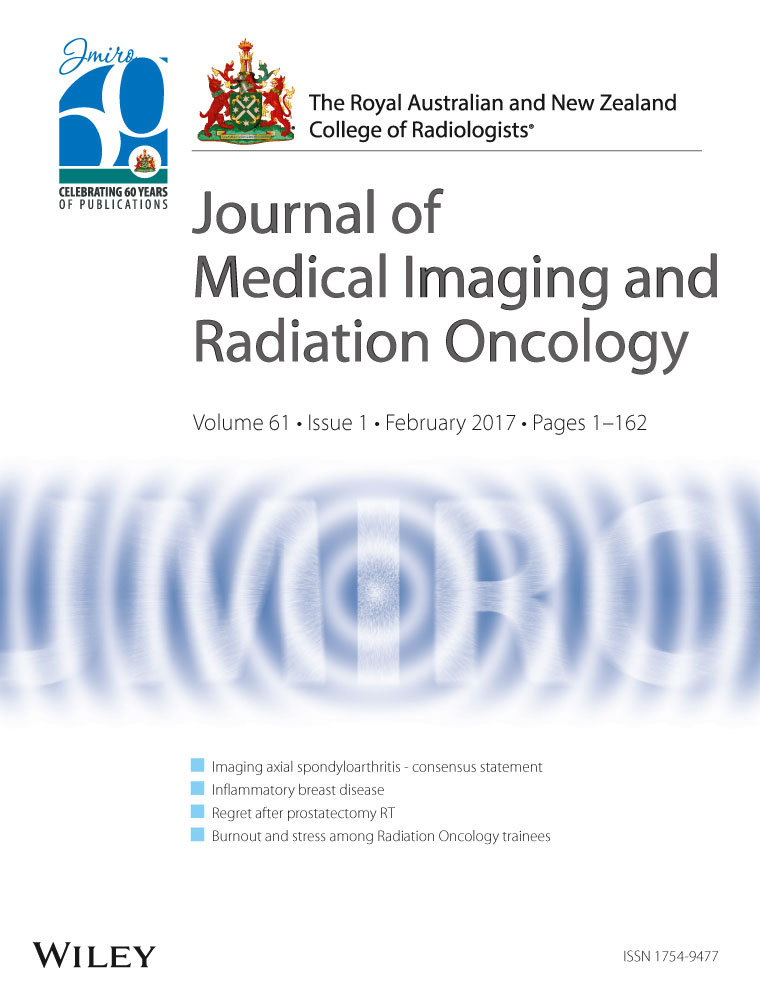High-risk CTV delineation for cervix brachytherapy: Application of GEC-ESTRO guidelines in Australia and New Zealand
Abstract
Introduction
Image-based brachytherapy for cervical cancer using MRI has been implemented in Australia and New Zealand. The aims of this study were to measure variability in High-risk CTV (HR-CTV) delineation and evaluate dosimetric consequences of this.
Methods
Nine radiation oncologists, one radiation therapist and two radiologists contoured HR-CTV on 3T MRI datasets from ten consecutive patients undergoing cervical brachytherapy at a single institution. Contour comparisons were performed using the Dice Similarity Coefficient (DSC) and Mean Absolute Surface Distance (MASD). Two reference contours were created for brachytherapy planning: a Simultaneous Truth and Performance Level Estimation (STAPLE) and a consensus contour (CONSENSUS). Optimized plans (8 Gy) for both these contours were applied to individual participant's contours to assess D90 and D100 coverage of HR CTV. To compare variability in dosimetry, relative standard deviation (rSD) was calculated.
Results
Good concordance (mean DSC≥0.7, MASD≤5 mm) was achieved in 8/10 cases when compared to the STAPLE reference and 6/10 cases when compared to the CONSENSUS reference. Greatest variation was visually seen in the cranio-caudal direction. The average mean rSD across all patients was 27% and 34% for the STAPLE HR-CTV D90 and D100, respectively, and 28% and 35% for the CONSENSUS HR-CTV D90 and D100. Delineation uncertainty resulted in an average dosimetric uncertainty of ±1.5–1.6 Gy per fraction based on an 8 Gy prescribed fraction.
Conclusions
Delineation of HR-CTV for cervical cancer brachytherapy was consistent amongst observers, suggesting similar interpretation of GEC-ESTRO guidelines. Despite the good concordance, there was dosimetric variation noted, which could be clinically significant.




